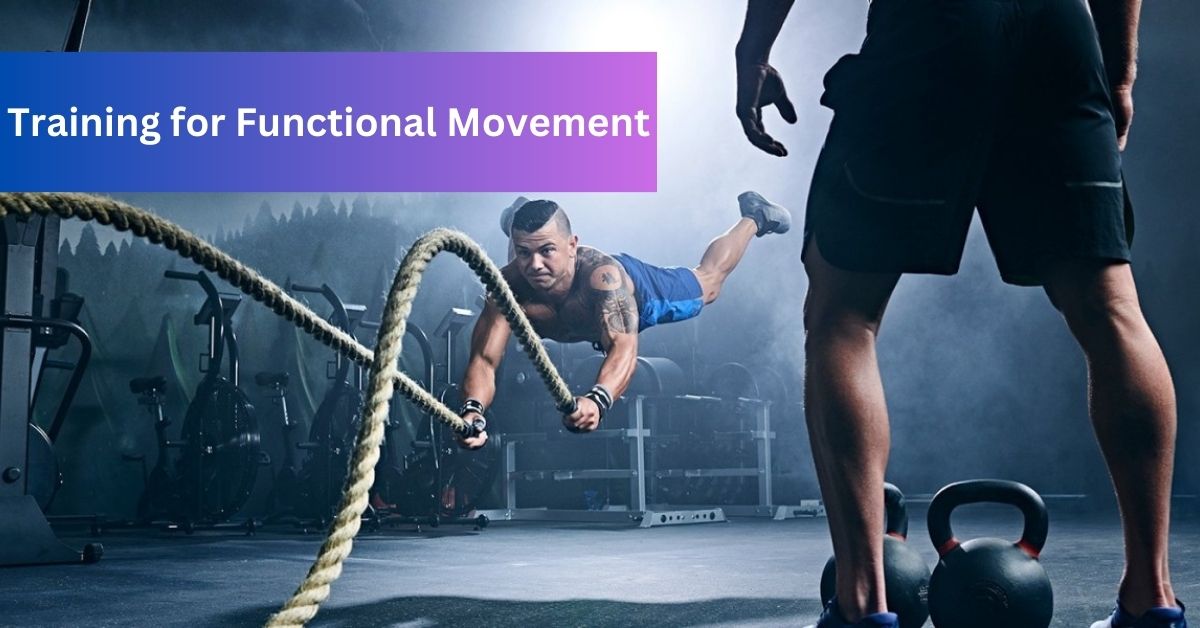Training for Functional Movement
Functional training centers on exercises and motions that replicate daily tasks, enhancing your ability to execute them more efficiently.
Yoga, with its emphasis on body awareness, mindfulness, and various poses, provides a solid foundation for functional movement. Here’s how you can integrate yoga into your functional training:
Start With the Basics
To establish a strong foundation in your functional movement training with yoga, start with fundamental yoga poses that engage different muscle groups and ranges of motion.
The downward dog pose targets the entire body, stretching and strengthening the arms, shoulders, legs, and back.
Plank pose works your abdominal muscles and strengthens your arms, shoulders, and lower back, promoting overall stability.
A bridge pose is a good option for strengthening the lower back, glutes, and hamstrings. This pose also helps open the chest and stretch the spine, enhancing flexibility. The warrior II pose works the legs, hips, and core, promoting balance and stability.
Strengthen Your Core
Core strengthening facilitates functional motion, as it provides the stability and support needed for a wide range of physical activities. Core strength helps protect your lower back from injury, reducing the stress placed on the spine during various movements.
In a boat pose, you sit on your backside, lift your legs, and balance on your pelvis. The pose targets the abdominal muscles, including the rectus abdominis and obliques.
The forearm plank intensifies the core engagement and builds strength and stability. A plank pose also engages the entire core, including the abdominal and lower back muscles. Side plank targets the oblique muscles, the shoulders, and legs for overall body strength.
Incorporate Breathing Exercises
Breathing exercises help enhance functional motion by promoting relaxation, reducing stress, and optimizing the efficiency of your physical activities.
Yoga breathing techniques, such as diaphragmatic breathing or deep belly breathing, stimulate the body’s relaxation response.
Deep breathing in poses like Savasana or corpse pose can help calm the nervous system and promote muscle recovery.
Proper breathing techniques can also allow your muscles to receive an adequate oxygen supply. With the oxygenation of muscles, you can perform physical activities more efficiently, as oxygenation helps prevent muscle cramps and fatigue.
Focused breathing assists in maintaining balance and stability during movements. Breathing exercises can help you stay centered and grounded, potentially reducing the risk of stumbling or falling.
Work on Mobility
Working on mobility helps maintain overall physical health and improve functional movement. Yoga is an effective way to enhance joint mobility, as it centers on flexibility, balance, and range of motion. Hip openers in yoga, such as pigeon pose and butterfly pose, target the hip joints, which are beneficial for functional motions like walking, bending, and sitting.
You can enhance shoulder mobility with poses like cow face pose, eagle pose, and thread the needle. Twisting poses like seated spinal twists and revolved triangle poses help improve the spine’s flexibility. A mobile spine is helpful for rotational movements and maintaining good posture.
Combine With Functional Exercises
Integrating functional exercises with yoga in your training program can create a unique approach to improving overall functional motion. Incorporate yoga poses focusing on leg strength, such as warrior I and warrior II, to complement squat exercises. These yoga poses engage the quadriceps, hamstrings, and glutes, enhancing your leg strength for functional mobility.
Kettlebell swings involve powerful hip hinge movements. Yoga poses like cat-cow and bridge can help you maintain a solid and flexible lower back, which is beneficial for kettlebell swings. Include sequences that involve bending and twisting, imitating everyday activities like picking up objects from the ground or twisting to look over your shoulder.
Remain Consistent
When you practice yoga regularly, your body adapts over time, and you may notice increased strength, flexibility, balance, and mobility. You can practice daily, a few times a week, or on a flexible schedule, maintaining a consistent routine.
Set realistic goals and track your progress over time. Attainable objectives help you understand your body’s capabilities and limits and adjust your practice accordingly.
Utilize Yoga for Functional Movement
By combining yoga with functional exercises, you create a well-rounded training program to boost mobility. Work with a qualified yoga instructor or physical therapist who can tailor your training accordingly. As you incorporate yoga into your training for functional movement, stay committed to your practice to reap the full benefits.





